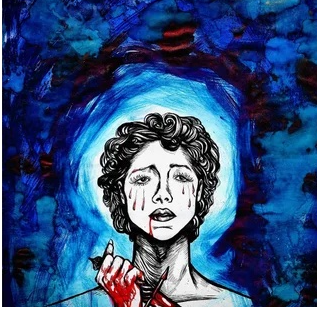“All men hate the wretched; how then I must be hated, who am miserable beyond all living things!” – Mary Shelley, Frankenstein
Devil, fiend, being, creature, abomination: out of all the words used in Frankenstein to describe the animated being at the heart of the story, it’s a bit odd that most often he is only called “the monster.” Why do we never use daemon (tastefully spelled as such by Mary Shelley in the original 1818 edition of the novel) or wretch, as the being sometimes calls himself? Even construct, which feels admittedly stiff for a creature of bone and flesh, might suit him better considering that he came to life only after being sewn together at the painstaking hand of his creator.
The being has never been given a name of his own – monster has simply been his moniker ever since he was first introduced to the literary readership of Regency-era England. Confronted with the visage of his rogue creation, Victor Frankenstein reaches for a word to realize what he saw as being formless, abominable, and unnatural. But the monster was not preconceived as an outcast, which he would later become: in fact, he was hardly preconceived of at all. What Frankenstein had animated was the result of an obsessive occupation with the power to endow life. His ambition was not set on shaping an individual awareness, but rather on the lofty ideal of a consciousness from whose existence he could draw the ultimate sense of obligation. This being, whose countenance he fled at the moment of its awakening, developed sensitive agency incidentally; his very existence was a natural consequence of Frankenstein’s unnatural actions. His progeny occurred through accident, and his monstrous condition was therefore manifest.
“The different accidents of life are not so changeable as the feelings of human nature.”
To the vague end of his creator’s design, the creature was intended to be comprised of a seemly arrangement of limbs and features, which Frankenstein had curated himself for their characteristic beauty. Perhaps unconsciously he’d expected a natural degree of conformity from something he could consider beautiful. But as soon as the creature stirs, Frankenstein is overcome with repulsion at its animism – its monsterhood, to him, becomes horrifyingly apparent. He watches the monster’s formless ambitions, now inextricable from this sinewed amalgamation, hoist up its outsize mass and take its first ungainly steps.
Something about reading Frankenstein to this point speaks to a familiar narrative of the queer experience. This becomes most obvious in the painful relationship between creature and creator, progeny and progenitor, and is also present in the monster’s baleful abandonment of a human society that will never accept him. At the same time, the thematic exploration of guilt, progeny and responsibility hints at an unmistakably feminine perspective: the one request of the creature to his creator in return for his own removal from the skirts of human society is not for retribution, but a singular understanding. The monster’s only demand is for a reciprocal, female companion.
“If I cannot inspire love, I will cause fear.”
The archetype of the female abomination began, insofar as concerns the public imagination, with the superfluous influence of Medusa’s image — vicious, terrifying but just as often tempting to her victims — which has only ever grown since her inception in legend. Her narrative, from her assault at the hands of the god Poseidon to her monstrous transformation, has become inextricable from both feminine violence and appeal. In varying ways, the mantle of desire has been donned by every one of her successors.
Even such obliquely irredeemable creatures as the Anglo-Saxon “sea witch” have managed to inspire rather liberal interpretations of their appearances and motivations according to certain artistic visions. A 2007 film adaptation of the epic Beowulf by the same name reimagined her in the form of a nearly nude woman with a golden serpentine tail, entirely subverting her original antagonism with the introduction of a misplaced strain of overtly seductive appeal. In the original epic poem no less, the “sea witch,” mother to the monster Grendel, isn’t even referred to by a single set of consistently gendered pronouns.
The literary intersection between the monstrous and the feminine, already occupied by a fearsome lineage of female characters, would certainly have welcomed another addition. The precipice on which Shelley leaves off the completion of the female creature by Frankenstein – and the brutality with which he dismantles his progress – leaves room to wonder how she would have considered the role of a feminine conscience in keeping with the particular natal violence of Frankenstein’s creature. Perhaps she’d decided that Victor Frankenstein, who spent most of the novel looking forward to a marriage with his first cousin, would simply have drawn a blank.
“I do not destroy the lamb and the kid.”
The creature becomes an outcast twice from the world of his progenitors. He is rejected for his nature, which is of an unknowable misery, but it is for the undoing of his own creation that he finally chooses to distance himself. In an off-beat lockstep echoing their first conversation, he incites Frankenstein to a pursuit toward the edge of the known world – away from the conditions of humanity. The nature that binds them resolves only with the dual demise of anomaly and antagony. There also lies monstrosity: in the preter-natal space between the human, the abominable, and the unconceived. In Frankenstein, it’s between every page.
